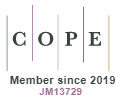Dynamic Adaptive Building Envelopes – an Innovative and State-of-The-Art Technology
DOI:
https://doi.org/10.15415/cs.2016.32004Keywords:
Dynamic Adaptive Building Envelope, Building Management System, Kinetic Façade, ActuationAbstract
The building envelope has a key role to play in achieving indoor comfort for the occupants and building energy efficiency. A dynamic, active and integrated solution -- able to achieve the optimum thermal performance, harness energy from renewable resources and, integrate active elements and systems -- is the most promising and innovative strategy for the building envelope of tomorrow. To achieve an effective and sustainable building envelope with a dynamic behaviour, considerable efforts in research and development are necessary. This paper endeavours to present a broad review of design, research and development work in the field of Dynamic Adaptive Building Envelope (DABE). Based on detailed studies, the characteristic features, enabling technologies, and the overall motivations that have tendered to the advancement of DABE are discussed. In spite of its positive aspects, the study reveals that the concept of DABE has not yet been well-applied and needs much more exploration. Various challenges need to be resolved and advanced research undertaken to bring it to maturity and acceptance.
Downloads
References
[2] BURKE, W.(1996) Chapter-10: Building Envelope. In F. Haselsteiner, K.Lundy, and S. Tageldin (Eds.), Sustainable Building Technical Manual– Green Building Design, Construction and Operations (pp. IV.21-26). USA: Public Technology, Inc. Available from: http://smartenergy.illinois.edu/pdf/archive/sustainablebuildingtechmanual.pdf. [Accessed: January 27, 2016].
[3] CHAPA, J. (2007) CH2: Australia’s greenest building. Retrieved February 13, 2016, from http://inhabitat.com/ch2-australias-greenest-building/
[4] CLIMATE ADAPTIVE BUILDING SHELL (2014) In Wikipedia, The Free Encyclopedia. Available from:https://en.wikipedia.org/w/index.php?title=Climate_adaptive_building_shell&oldid=635146206. [Accessed: January 27, 2016].
[5] COUNCIL HOUSE 2 (2016) In Wikipedia, The Free Encyclopedia. Available from:https://en.wikipedia.org/w/index.php?title=Council_House_2&oldid=719430230. [Accessed: February 13, 2016].
[6] COUNCIL ON TALL BUILDINGS AND URBAN HABITAT, THE CTBUH. (2013) Innovation Award Winner. In Wood, A. (Ed.), Best Tall Buildings 2012 (pp. 172-177). Abingdon, OX: Routledge. Available from:http://www.ctbuh.org/LinkClick.aspx?fileticket=c8GlZooATFg%3D&tabid=3845&language=en-US. [Accessed: February 13, 2016].
[7] ERICKSON, J. (2013) Envelope as Climate Negotiator: Evaluating adaptive building envelope’s capacity to moderate indoor climate and energy (Doctoral dissertation, Arizona State University, USA). Available from: https://repository.asu.edu/attachments/110622/content/Erickson_ asu_0010E_13038.pdf. [Accessed: February 13, 2016].
[8] GOIA, F. et al. (2010), Towards an active, responsive and solar building envelope, Zero Emission Buildings. Proceedings of Renewable Energy Conference 2010, Trondheim, Norway. Available from: https://www. academia.edu/19742929/Towards_an_Active_Responsive_and_Solar_ Building_Envelope. [Accessed on 15/02/2016]
[9] HATHAWAY, E.B. (2015) Dynamic, Adaptive Building Envelopes. In KOLAREVIC, B. and PARLAC, V. (Eds.), Building Dynamics: Exploring Architecture of Change. New York: Routledge.
[10] KOLAREVIC, B. and PARLAC, V. (2015) Adaptive, Responsive Building Skins. In KOLAREVIC, B. and PARLAC, V. (Eds.), Building Dynamics: Exploring Architecture of Change. New York: Routledge.
[11] LECHNER, N. (2009) Heating, Cooling, Lighting: Sustainable Design Methods for Architects. New York: John Wiley & Sons, Inc.
[12] LINEAR ACTUATOR (2016) In Wikipedia, The Free Encyclopedia.]. Available from: https://en.wikipedia.org/w/index.php?title=Linear_ actuator&oldid=719920036. [Accessed: February 13, 2016]
[13] LOONEN, R.C.G.M., TRČKA, M., CÓSTOLA, D. and HENSEN, J.L.M. (2013) Climate adaptive building shells: State-of-the-art and future challenges. Renewable and Sustainable Energy Reviews, Vol. 25 (September 2013), p. 483–493. Available from: http://dx.doi.org/10.1016/j. rser.2013.04.016. [Accessed: February 13, 2016]
[14] MCEVOY, M. A. and CORRELL, N. (2015) Materials that couple sensing, actuation, computation, and communication. Science, 347 (6228). p. 1261689-1 – 1261689-8. doi: 10.1126/science.1261689
[15] OGWEZI, B., BONSER, R., COOK, G. and SAKULA, J. (2011) Multifunctional, Adaptable Facades. Paper presented at the TSBE EngD Conference, TSBE Centre, University of Reading, Whiteknights, RG6 6AF. Available from: https://www.reading.ac.uk/web/FILES/tsbe/ ogwezi_tsbe_conf_2011.pdf. [Accessed: February 14, 2016].
[16] PARK, D. (2012) Modular Pneumatic Facade System (MPFS) [PowerPoint slides]. Available from: https://www.scribd.com/doc/72005418/ModularPneu-Facade-system. [Accessed: February 13, 2016].
[17] PARK, D. and SUNG, W. (2011) Modular Pneumatic Facade System (MPFS) [Web log post]. Available from: http://courses.media.mit. edu/2011fall/mass62/index.html%3Fp=1864.html. [Accessed: February 13, 2016].
[18] PERINO, M. and SERRA, V. (2015) Switching from static to adaptable and dynamic building envelopes: A paradigm shift for the energy efficiency in buildings. Journal of Facade Design and Engineering. 3(2), 143–163. doi: 10.3233/FDE-150039
[19] ROSENFIELD, K. (2014) REX designs conjoined media towers with retractable facade for Middle East. In ArchDaily. Available from: http:// www.archdaily.com/497572/rex-designs-conjoined-reactive-mediatowers-in-middle-east/. [Accessed: February 13, 2016].
[20] SMART GLASS (2016) In Wikipedia, The Free Encyclopedia. Available from: https://en.wikipedia.org/w/index.php?title=Smart_ glass&oldid=719840871. [Accessed: February 14, 2016].
Downloads
Published
Issue
Section
License
Articles in the Journal of Creative Space (Creat. Sp.) by Chitkara University Publications are Open Access articles that are published with licensed under a Creative Commons Attribution- CC-BY 4.0 International License. Based on a work at https://cs.chitkara.edu.in. This license permits one to use, remix, tweak and reproduction in any medium, even commercially provided one give credit for the original creation.
View Legal Code of the above-mentioned license, https://creativecommons.org/licenses/by/4.0/legalcode
View Licence Deed here https://creativecommons.org/licenses/by/4.0/
 |
Journal of Creative Space by Chitkara University Publications is licensed under a Creative Commons Attribution 4.0 International License. Based on a work at https://cs.chitkara.edu.in/ |







